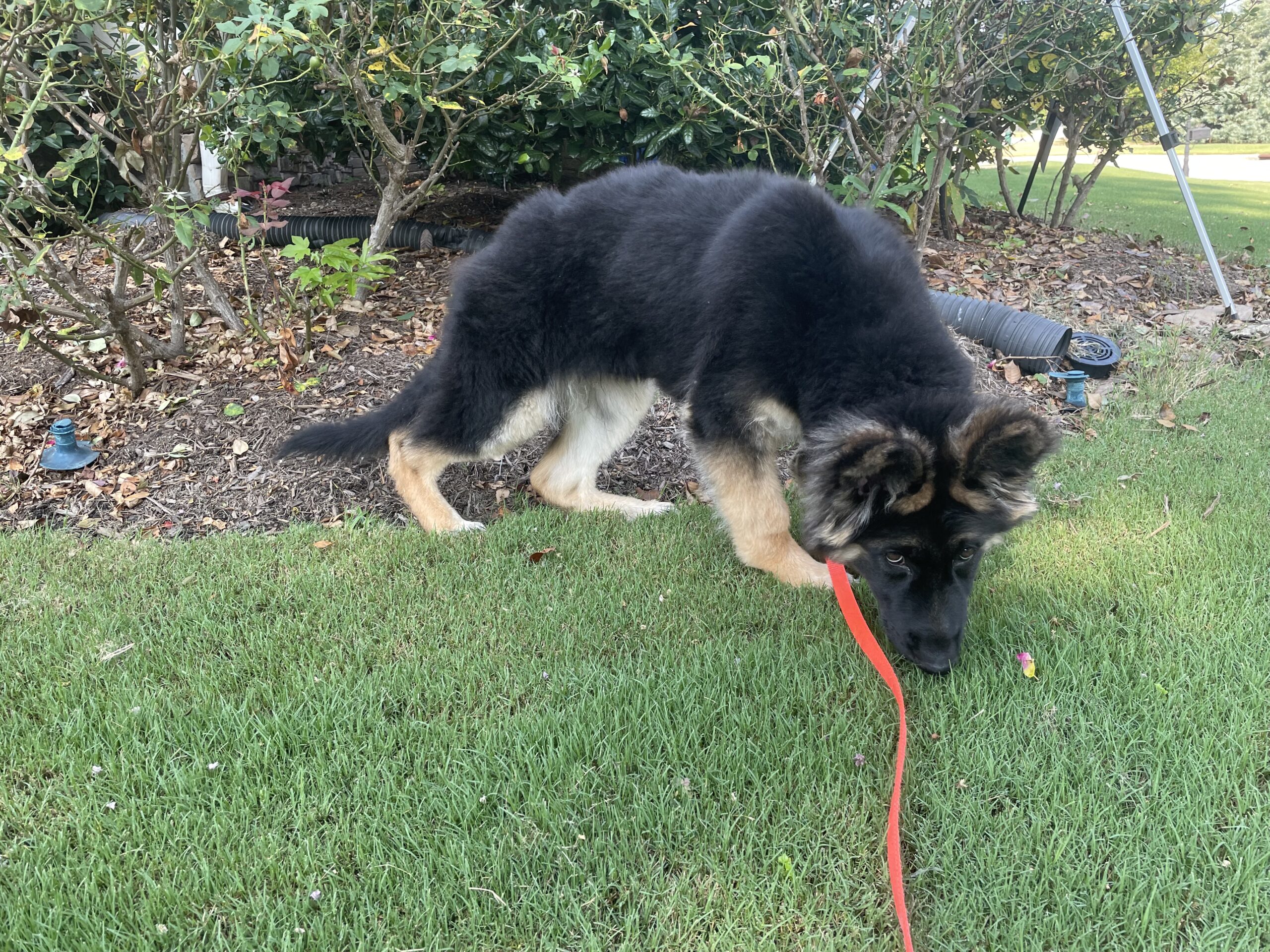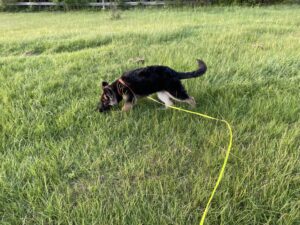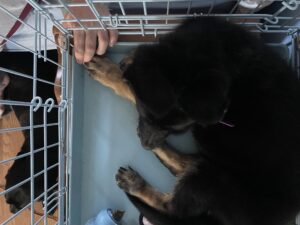House training is one of the very first things you want to work on when you bring a new puppy or adult dog into your home for the first time. Even if you’re pretty sure your adult dog is potty trained, they may be especially prone to accidents and slip-ups in their first few weeks while they decompress from their major change in lifestyle.
Solid potty training is built on a solid routine, and is more about developing the habit of peeing outside rather than the skill of peeing outside (but that’s useful too!)
Here are some rules to follow when building a new potty training routine:
Take your dog out frequently & after any activity changes.
- Young puppies physically cannot hold their bladders as long as adult dogs can, so they need to be taken out much more frequently.
- A good rule of thumb: puppies can hold their bladder for roughly one hour per month of age. (For example, a 3-month-old puppy can typically wait about 3 hours.)
- Smaller breeds have smaller bladders, so they typically need to go out more often.
- Every activity change should prompt a trip outside. Waking up from a nap, ending a play session, after eating or drinking – these are all activity changes that result in puppies needing to pee.
- When you take them out, make sure you end their potty break with something good! You can also teach them to potty on cue to shorten your trips.
Reward what you love, interrupt and relocate what you don’t.
- If your dog successfully goes potty outside, throw them a party!! Getting to go pee outside should be a highlight of their day.
- If you catch your dog in the middle of an accident, interrupt them kindly – clapping, calling their name, kissy sounds, or approaching them and directing them away are all good options. Once you’ve interrupted them, take them outside and encourage them to finish their business there.
Never punish your dog for making a mistake or eliminating inside.
- You will not successfully prevent future accidents this way! Your dog will learn one of two things: it’s scary when I pee or poop inside and people can see me do it, or it’s scary when people find my pee or poop inside.
- The result? Your dog will still pee and poop inside, but now they’ll hide it.
- Learning is most effective when the timing of a consequence (punishment or reinforcement) is immediate. As soon as your puppy empties her bladder or bowels, she experiences instant physical relief, which acts as immediate reinforcement. This relief signals to her brain, “This feels good—do it again here next time.”
- By the time you punish her—even just seconds later—the rewarding sensation has already reinforced emptying indoors. As a result, your puppy learns only that finishing eliminating near you is stressful and unsafe, encouraging her to hide when she needs to go. Focusing on supervision & management avoids these pitfalls entirely, clearly communicating exactly where you want your puppy to potty and strengthening the right behavior faster.
Thoroughly clean all accidents or suspected accidents with an enzymatic cleaner.
- Canine urine & feces have odorants that attract dogs to go in that same place again. Make sure you clean thoroughly with an enzymatic cleaner and remove all traces of smell. Non-pet-specific deodorizing cleaning agents will not work!
Supervise closely, confine, or manage your dog at all times.
- Supervise your dog whenever possible. Look for any signs that they might need to potty, and take them to their designated space immediately.
- When you can’t supervise, confine your dog to a crate or small play pen. Encourage your dog to nap there, and make sure the spot is small enough to discourage soiling.
- If your dog has any confinement anxiety, manage them instead. Use a large play pen in an easy to clean space, and set up an appropriate indoor potty area for them to use. I recommend using artificial turf rather than potty pads, as potty pads feel similar to fabric and can accidentally teach your puppy to use fabric like rugs, towels, or clothes as appropriate places to potty.
Remove trouble spots from your dog’s reach.
- If your dog is regularly having accidents in a specific place, prevent them from accessing it until they have a solid understanding of house training.
- Rugs and other easily removable objects should be picked up, and use baby gates to prevent access to trouble rooms.
Consider temporarily adding a potty station indoors, or to a porch / balcony.
- If your dog can’t hold it long enough for you to be able to effectively manage it, a potty station is a good option.
- I recommend sod, artificial turf, or a dog litterbox. Puppy pads can work in a pinch or on a temporary basis, but the texture of the pads can confuse some dogs and result in them seeing any fabric or paper on the ground as a good place to go.
- Once your dog can reliably hold it, you can transition from a potty station to outdoor-only bathroom breaks. Gradually move the station closer to the door, then set it outside the door. This can also help teach them to signal by whining or fussing at the door!
Unexpected potty training regression could be a sign to speak with your vet.
If your dog was previously reliable and suddenly is having accidents inside again, reach out to your vet. Urinary tract infections, bladder infections, hormonal changes, and other health issues can impact the reliability of house training.



